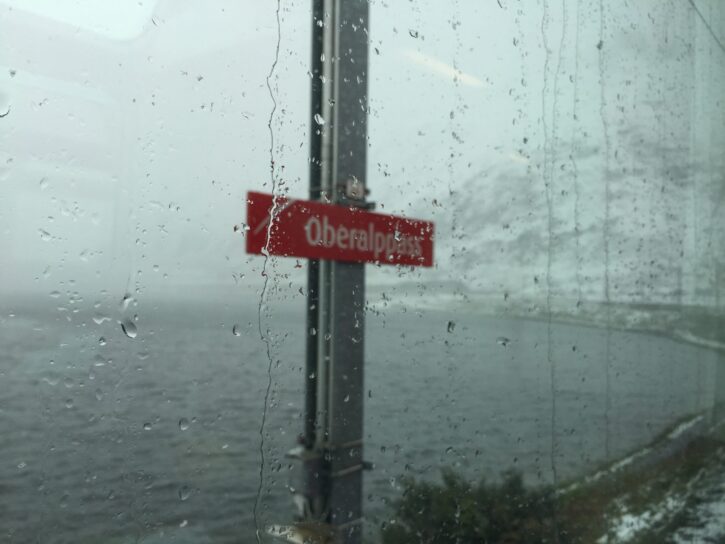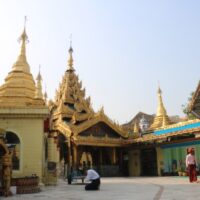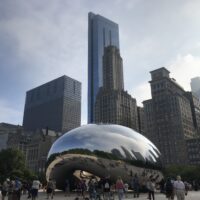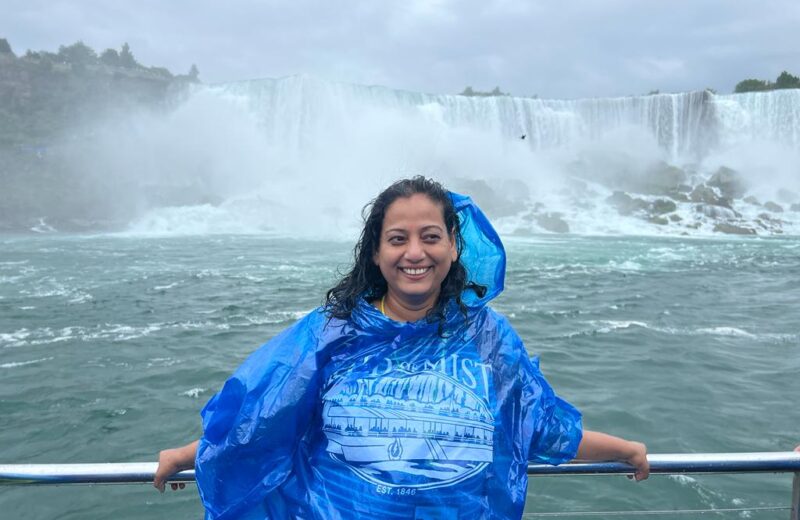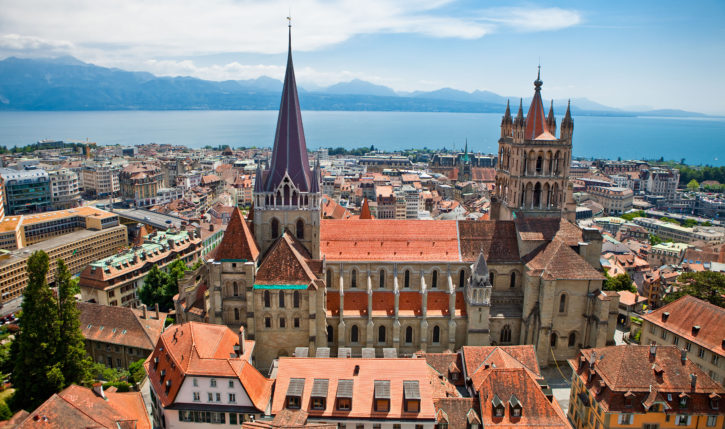I was on a train from Interlaken to Spiez and then on to Geneva when a thought struck me.
How about I hop on the Glacier Express to St Moritz?
The only snag in an otherwise dramatic plan was that I first had to reach Speiz, then catch a train to Brig and if I was lucky, get a ticket on the Glacier Express coming from Zermatt that stopped at Brig.
I had the greatest faith in Swiss trains and their punctuality, so I decided to do just that. Plus, those of you who know me, know that I have an addiction for trains. And this was one opportunity I wasn’t going to miss – without trying.
So, I arrived at Speiz, hopped on a train to Brig, got myself a ticket (thanks to the low season) only a few, tense minutes before the Glacier Express pulled in. Despite the winter cold, my heart warmed as the sight of it.
I was finally going to experience a journey that hitherto existed in movies and imaginations.
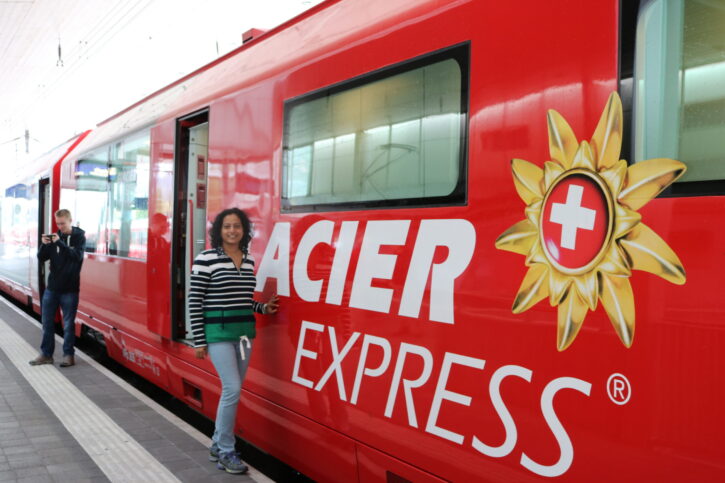

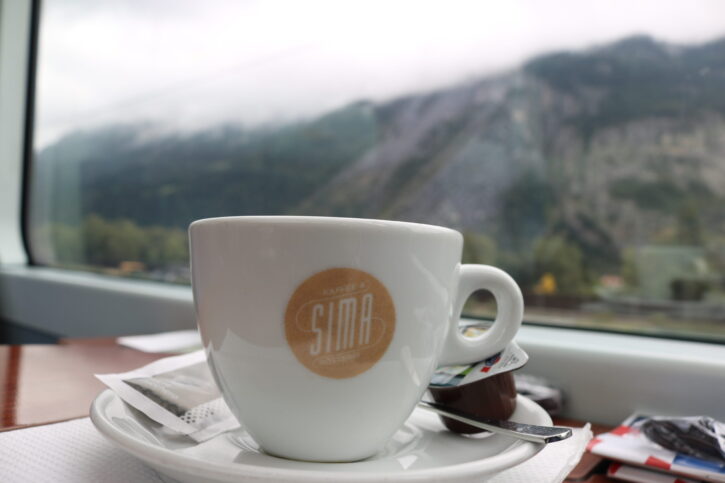
Views are worth dying for
The Glacier Express (or GEX) was not entirely full but the anticipation in the train carriage was almost palpable. Without exception, all my fellow passengers had their noses pressed against the window, necks craned in unison, to catch the glimpse of the Swiss countryside. It was impossible not to enjoy this journey. We edged out of the station and into the wintry countryside when my heart started beating again. Inside the train was as delightful as the outside – especially seeing the faces of the co-passengers was a reward! From open countryside, we passed through many narrow places and several times we were flanked by massive rock walls. What an impossible engineering skill, I thought and immersed myself in the pristine mountain landscapes and delightful little towns.
Soon the train plunged for fifteen minutes into the Furka Tunnel before the bright red carriages with almost floor to ceiling windows wound upwards like a caterpillar through the snowy mountains up to Andermatt.
Andermatt, I’ll have you know, lies at the crossroads of the Swiss Alps, and has been traversed for centuries by merchants and travelers -including Goethe, the greatest German literary figure, who stayed at the Hotel Drei Konige und Post in 1775. Today, the village is a hub for skiers and hikers.
From Andermatt to Chur is where the famous Oberalp Pass begins. Here, the Glacier Express reaches a height of over 2,034 meters, the highest part of the journey. Chur is the lowest elevation, but it soon opened up to breathtaking views of the River Rhine, also known as the Grand Canyon of Switzerland.
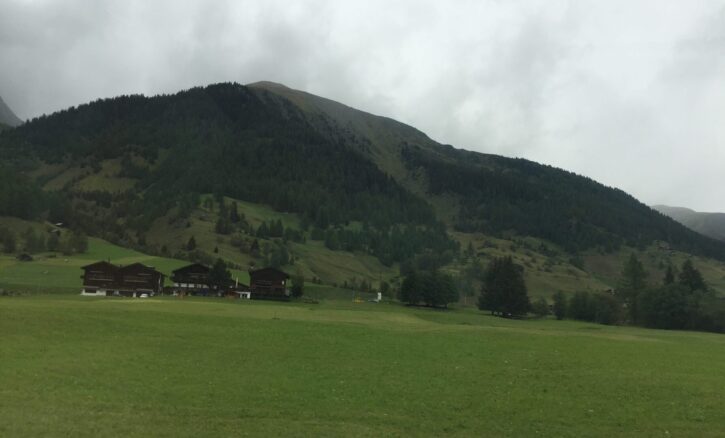
The Glacier Express
I had missed the section between Zermatt and Brig – but who is complaining! I was enjoying the journey so much that I forgot why I was here. Truth be told, I had no idea what made take this impulse jump on a train heading to a destination where I had no hotel reservation, but I didn’t let that deter me from enjoying the ride. There are very few times I have wanted to cry out of sheer happiness – this was one of those moments.
There is one thing of course that bothered me – it was hard to take pictures, thanks to the reflections of the glass windows, so in the end I decided to just stick my nose to the window like the rest of the passengers and drink in the scenery whilst enjoying some expensive coffee and later, a grand lunch.
The self-proclaimed slowest fast train in the world considered to be one of the greatest railway journeys runs slower than a local train but with the comfort of an express train, through gorgeous countryside.
This is train travel at its best.
Because it was in the dead of winter, the Alps were blanketed with snow, but the weather was great with lots of sunshine, and the skies were a deep cerulean blue – just like the Switzerland I had seen in many wintry postcards.
Soon, we arrived at Oberlap Pass, the highest point of the journey and straight into a winter wonderland. The train made an unscheduled stop but there was no way to leave the train. I know because I tried. At 2000m on a bright winter day, the vast, sweeping snow fields of Switzerland’s Oberalp Pass glistened. The snow was deep, a thick blanket of white. There was no one in sight except for the two virgin ski tracks that spelt high-alpine solitude. The famed Rhine river has its origins here. I wished we could have just stood there longer. The solitude of Oberlap Pass hit me – and my mind went into the many plot twists in a imaginary story forming in my mind.
The scenery changed once we left the Pass. Next in the line of attractions was the giant viaduct. All the passengers leaned to the right side of the train. Near Filisur, a small and attractive mountain resort in the heart of Graubunden, the train entered a tunnel and emerged atop the 210-foot-high Landwasser Viaduct, built between 1906 and 1909 over the wild and rocky Landwasser gorge. It was a magnificent sight – I thought the train slowed a little for us to catch the grand view – or it could have been my imagination. I never managed to get a picture of it.
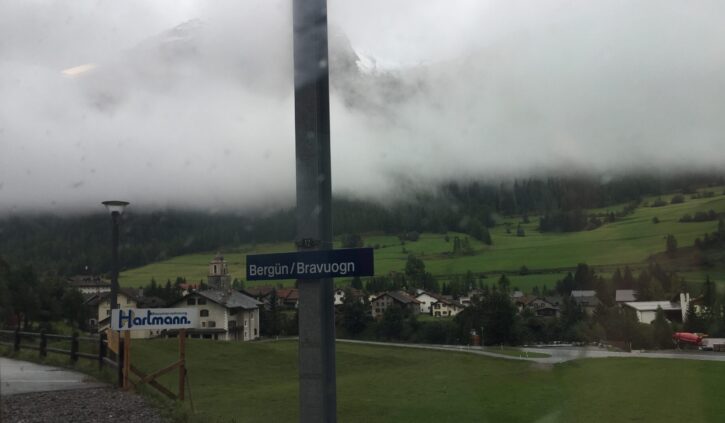
One arch is formed against sheer rock race. My advice – if you have a fear of heights, don’t look down. The Viaduct is quite an engineering marvel as it curves spectacularly high up in space before piercing the side of a mountain through a tunnel. The town of Filisur itself is built along a single street and has been entered into the national inventory of cultural treasures and is considered one of the best-preserved Engadine one-street villages.
Then came Samedan, once a Roman settlement. It’s Engadine houses (with mighty stonewalls and funnel-shaped windows) are exemplar, adorned with sgraffito designs of rosettes. But that is not all – Samedan holds the Guinness Record for The Smallest Whiskey Bar on Earth with over 300 varieties from around the world. I vowed to backtrack from St Moritz to visit this landmark place. It was something I simply couldn’t miss.
We were almost nearing the end. A number of ”wows” went up in the carriage as the train went through its last leg with some zest.
Someone in the carriage exclaimed. “It’s gorgeous.”
That one word pretty much summed up eight hours of sheer pleasure for one’s eyes and palate.
When we pulled into St Moritz, I felt like I had never felt before. Cold and yet fully satisfied.
St Moritz
St Moritz wasn’t the best choice for a holiday in winter unless you are here for the ski-slopes. I did manage to get myself a room at Hotel Steffani with fantastic views of the mountains covered in snow. I missed the train journey. Weather forecast was gloomy – more snow was predicted but, in the end, that is what my best memories of St Moritz are made of. I ended up staying three days and loving every moment of it.
It was here I discovered that St Moritz has a leaning tower and winter-prices at most of the hotels are affordable.
I also realized that unplanned journeys often lead to unexpected surprises.
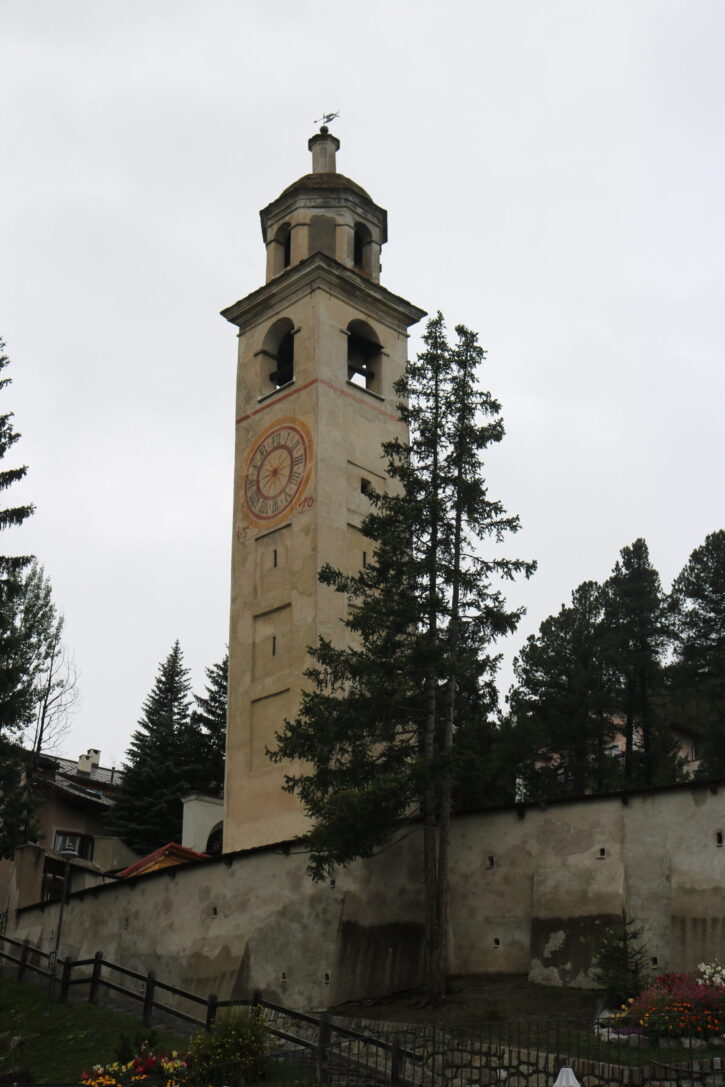
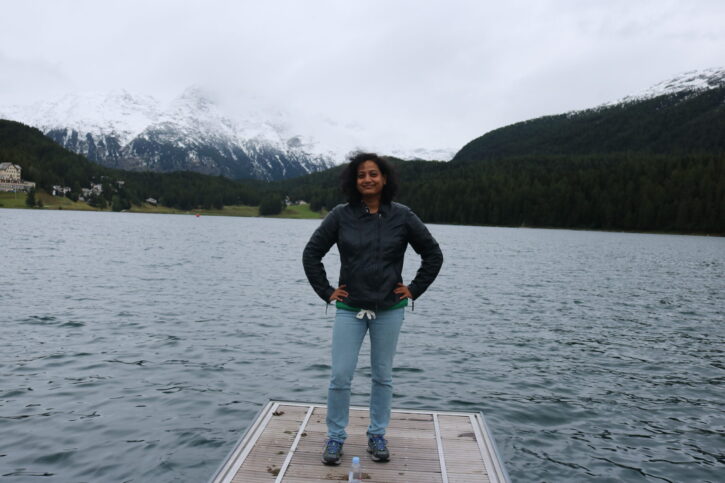
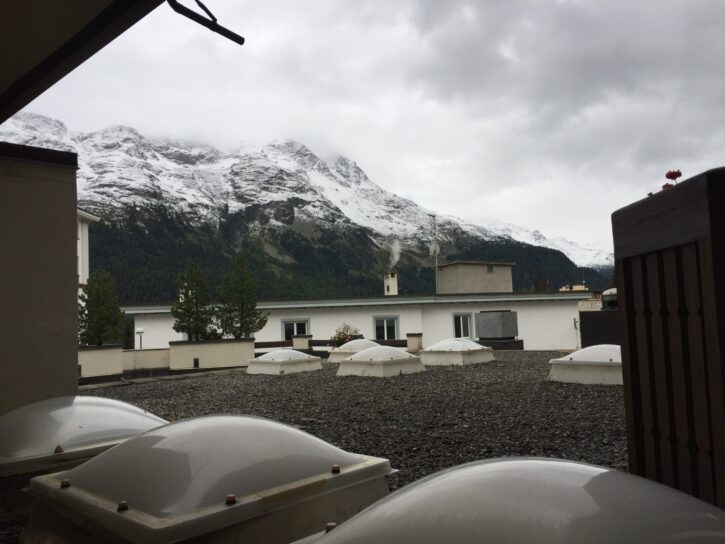
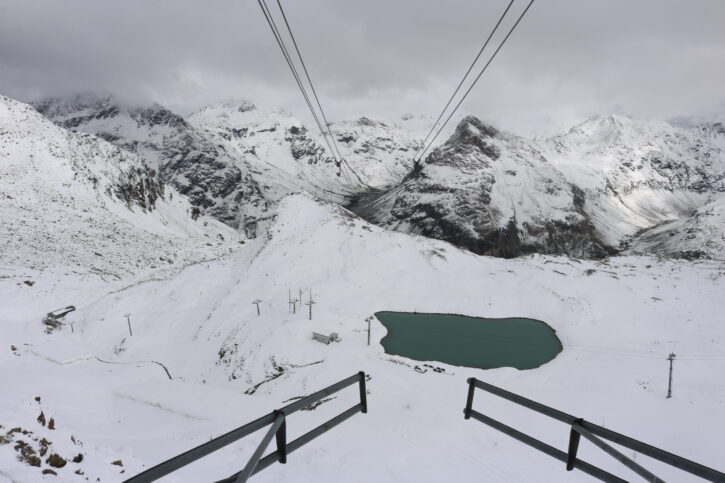
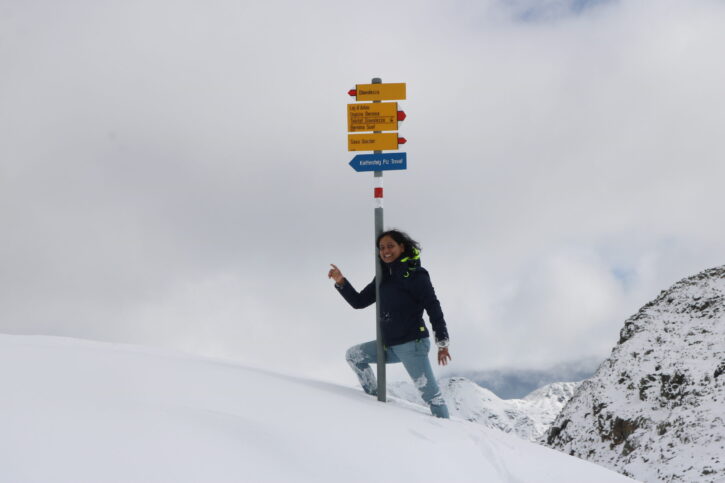
USEFUL INFORMATION
- In operation since 1928, the train travels through the Swiss Alps, from St. Moritz and the Bernina mountain range in the southeast, to Zermatt and the Matterhorn in the southwest.
- From the lowest to the highest point on the trip, the train covers 4,718 feet in altitude.
- For much of its journey, the Glacier Express also passes through the Rhaetian Railway in the Albula/Bernina Landscape, a UNESCO World Heritage Site.
- During its 300km journey (Zermatt to St Moritz), the Glacier Express travels through three different cantons of Switzerland – Valais, Uri and Graubünden – and seven stations. The narrow-gauge track goes across three high-mountain passes, goes through 91 tunnels and trundles across 291 bridges, including the famous Landwasser Viaduct, the dramatic Rhine Gorge – “The Swiss Grand Canyon” and – Oberalp Pass and the highest part of the journey at 2034 meters.
- The traveler sees glaciers and valleys, forests and waterfalls, rivers, lakes, gorges and viaducts, vineyards, picture-postcard hamlets and towns, medieval castles and churches – a tableau of Swiss geography, history, culture — and achievement.
- The nine-and-a-half-mile Furka Tunnel, drilled under the Furka Pass (at 7,975 feet), is the world’s longest one-meter-gauge tunnel. Opened in 1982, it took almost 10 years to build.
- If you are fed up of the scenery (hardly likely), get talking to the service staff on board. They are very knowledgeable about the sites and are happy to answer any questions you may have. You will also have a tablet that charts your journey in real time. Information about the different areas you pass through will show up on the screen, along with sightseeing suggestions for your future travels!
Handy Tips
If you aren’t like me and prefer to ensure a seat on this … here are a few tips that might help you enjoy this journey better.
- Book in advance (as early as 90 days).
- Don’t worry about which side of the train you are seated because no matter what you are ensured of 180-degree views.
- Pictures? Every sight is tempting but I suggest you put away your camera and just enjoy the view.
- Consider buying a rail pass – the tickets are not cheap on this one (and there is a reservation fee to consider). But if the price is the worry, consider traveling in low season.
- Dine on board for that unique experience – ask for the beef stroganoff (my favourite) and wash it down with a glass of Blauburgunder, with the changing alpine scenery as your backdrop is an unforgettable experience.
Trip information for the Glacier Express
- Distance (St. Moritz / Davos – Zermatt): 291 km
- Highest point: 2’033 meters above sea level (Oberalppass)
- Lowest point: 585 meters above sea level (Chur)
- Gradient: up to 179 parts per thousand
- Number of tunnels: 91
- Number bridges: 291

